PV and hydro powered Tassie off-grid home
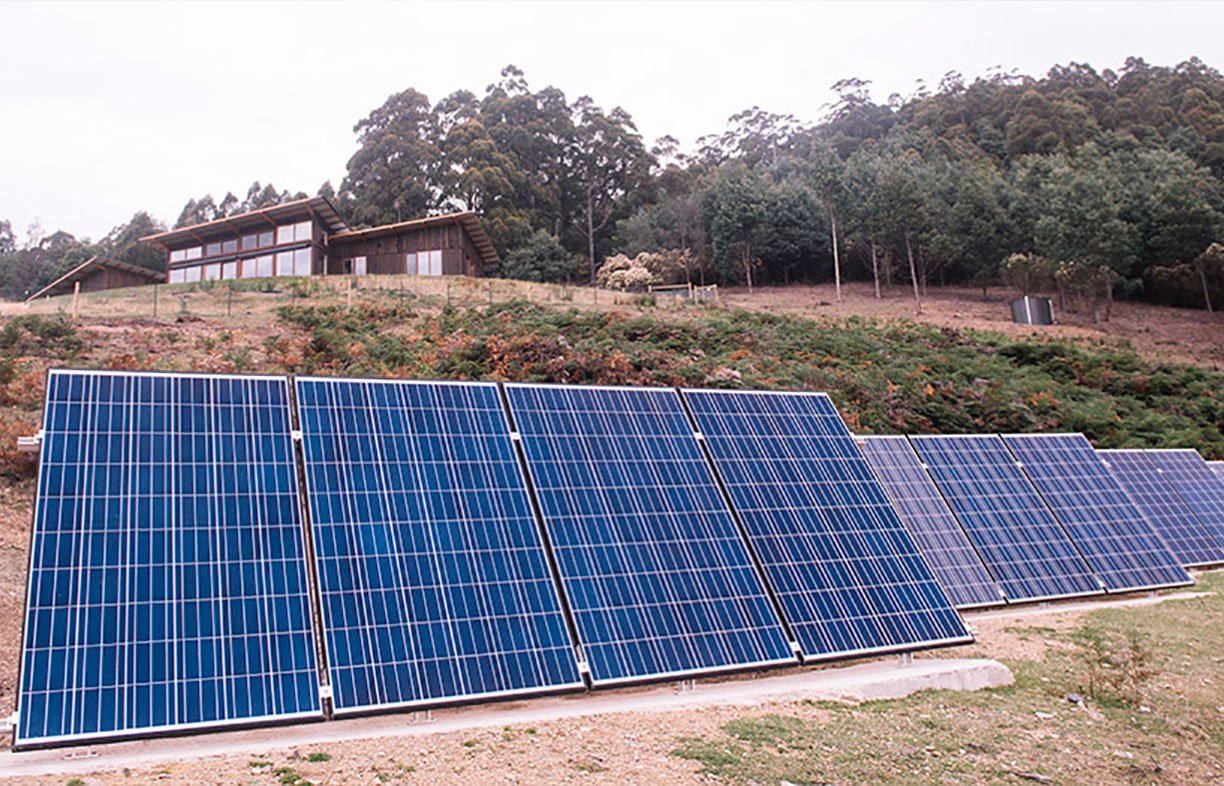
Given their distance from the nearest power pole, it made sense financially as well as philosophically for this Sydney couple to go off-grid in their new home in Tasmania. Peter Tuft describes how they went about it.
This article was first published in Issue 137 (October-December 2016) of Renew magazine.
As we approached retirement my wife Robyn and I knew we did not want to spend the rest of our lives in Sydney. Sydney’s natural environment is glorious but it is also much too busy, too hot and humid in summer, and our house was too cold and hard to heat in winter. We had loved Tasmania since bushwalking there extensively in the 1970s and it has a lovely cool climate, so it was an obvious choice.
We narrowed the selection to somewhere within one hour‘s drive of Hobart, then on a reconnaissance trip narrowed it further to the Channel region to the south. It has lush forests and scattered pasture with the sheltered d’Entrecasteaux Channel on one side and tall hills behind—just beautiful. And we were extraordinarily lucky to quickly find an 80 hectare lot which had all those elements plus extensive views over the Channel and Bruny Island to the Tasman Peninsula. It was a fraction of the cost of a Sydney suburban lot.The decision to buy was in 2008 but building did not start until 2014 so we had plenty of time to think about what and how to build. We have always been interested in sustainability, and renewable energy in particular, even before they became so obviously necessary: my engineering undergraduate thesis in 1975 was on a solar heater and Robyn worked for many years on wastewater treatment and stream water quality. There was never any doubt that we would make maximum use of renewable energy and alternative waste disposal methods.
From the beginning we knew the house would be of passive solar thermal design. The house sits high on a hill (for the views!) and faces north-east. The main living room is entirely glass-fronted, about 11 m long and up to 4 m high with wide eaves. That allows huge solar input to the floor of polished concrete. A slight downside is that there is potential for it to be too warm in summer, but we’ve managed that with shade blinds and ventilation and so far it has not been a problem. All walls, floor and roof are well insulated, even the garage door, and all windows are double-glazed. Supplementary heating is via a wood heater set in a massive stone fireplace chosen partly for thermal mass and partly because it just looks awesome. Warm air from above the wood heater convects via ducts to the bathroom immediately behind the chimney, making it very cosy indeed.
Stone and timber sourced from the site
We were fortunate to be able to use a lot of on-site materials. The external cladding, both timber and stone, was sourced from our own land. Eighteen months before building started we had some large eucalypts felled and milled into cladding boards then stacked to dry. Some very large pine trees (weeds as far as we are concerned) were processed similarly and ended up making a lovely panelled ceiling in our large living room. Our property has extensive syenite, a granite-like rock which often has beautiful large crystals of feldspar and colours varying from grey through creamy yellow to a dusky red. We spent days picking tons of loose stone from the ground surface then transporting it to a dam where we cleaned it with a pressure washer before handing over to the stonemason. The same stone was also used for the fireplace.
Off-grid made sense
The house is over one kilometre from the nearest power pole, and there was a local government requirement for power cables to be buried. The cost of that plus our natural inclination for independence made it very easy to decide on off-grid power.
Our primary power supply is 4 kW of solar panels. We considered wind power but a weather station we installed years before building showed that the wind was too erratic in both speed and direction. However, from our occasional visits we realised that a little creek seemed to flow consistently in winter and might be suitable for a micro-hydro generator. We installed a stream gauge and logger in an attempt to gather long-term flow data, but it needed regular attention that we could not give with visits a few months apart. Despite the lack of long-term data we took a punt and went ahead with the hydro anyway.
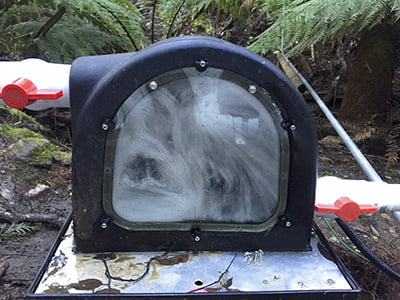
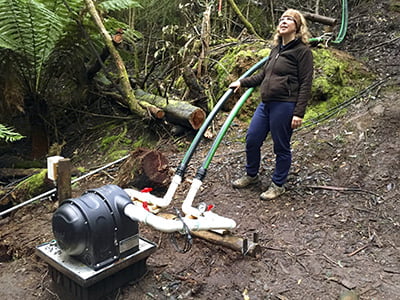
The solar panels and batteries were sized to supply power for the summer months on the basis that any shortfall in winter would be made up by the hydro generator, and so far that has worked exceptionally well. There is a backup petrol generator but it has never been needed; it has run only for monthly tests and some initial spurious auto-start events while we were still getting the power control system tuned.
We have so much energy that we bought an electric car. I like to say that it runs on sun and rain.
We planned from the start to be frugal with our use of energy and we certainly don’t use electricity for anything that requires long duration heating (although it turns out we possibly could). There is no problem at all using an electric kettle, induction cooktop, hair dryer or other appliances that draw high power for only short periods, nor for anything electronic or motor-driven, because such devices are usually relatively low wattage. The PV system alone easily met all the builders’ energy needs during the later months of construction, and builders use a lot of electrical equipment.
Hydro install—a personal project
The solar power system was supplied by a local installer but most of the hydro system was a personal project. We did use a specialist to integrate the electrical output into the rest of the system. The PowerSpout turbine was delivered mounted on a poly pit. To install it we just half-buried the poly pit with a small tailrace trench draining from one side—simple. The piping was more challenging. Uncoiling and managing 50 m lengths of 50 mm polypipe stiffened by Tasmanian winter temperature took effort and care (think clock spring). Fortunately they were easy to drag downhill into position once we got them straightened out. The other challenge was installing 130 m of cable into steel conduit because it could not be buried on the extremely steep, rocky, forested hillside out of the gully from the turbine. While installing the conduit in 4 m lengths we walked up and down that 50 m high hill about 40 times.
Unlike a solar panel the output of a hydro generator cannot be wound back as the batteries become full. The energy has to go somewhere. In our case it goes first to a 750 W element in our hot water tank. If the tank gets too hot the element thermostat shuts it down and the surplus energy then goes to a couple of secondhand electric oven elements suspended under the eaves of the power shed. These are mounted high enough to be safely out of the way, and in any case, putting only 750 W into elements rated to at least 4800 W means they only get very warm rather than dangerously hot.
The hydro power dump to the hot water tank is only a minor boost to our hot water system. Water is heated mostly by a solar collector and boosted by the wetback in the wood heater. Paradoxically (but delightfully) we get a lot more hot water in winter than summer due to the combination of the wood heater and the hydro dump load, neither of which contribute in summer.
The hot water is also used for heating the guest area of the house via hydronic panels. The hydronic heating is very effective but it does require that we keep the fire burning well. Firewood is stored in a box beside the heater about 1000 x 1000 x 600 mm, and a full box lasts two to three weeks of normal use in mid-winter when we only have the fire burning in the evening. I suspect that is a relatively low consumption that reflects the high level of insulation throughout the house. The woodbox lasts only one to two weeks if we are burning the fire longer to heat the guest rooms. Since we have about 20 ha of forest we are never going to run out of firewood, and so far we have found that turning dead trees into firewood is a task we enjoy.
We can monitor the status of the power supply system via a cheap laptop in the power shed. It interfaces to the Selectronic inverter to tell us more than we could possibly want to know, and is networked to the house so we can keep tabs on the power situation from the comfort of our desks. There is also a display unit showing temperatures at upper and lower levels in the hot water tank. We get immense satisfaction watching our systems perform so well and check on them much more often than is really necessary.
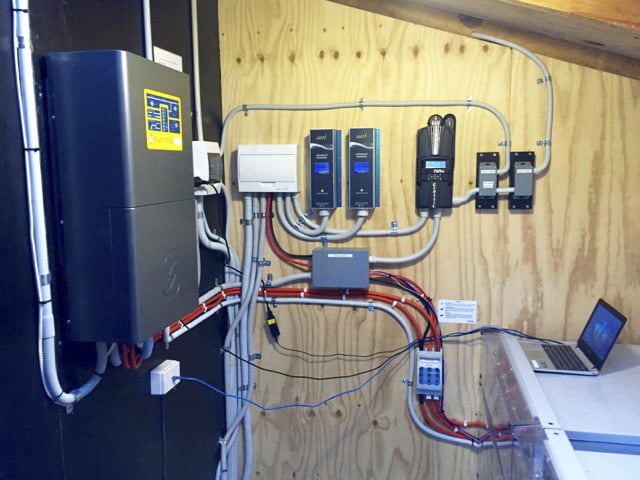
Off-grid for water too
Water supply is of course rainwater collected from the roof. A couple of 2000 L slimline collection tanks under the eaves are connected to a pump that transfers water to two 10,000 L storage tanks 30 m above house level on the hill behind us. When the collection tanks fill, the pump is turned on by a simple float level switch and when the storage tank is full a float valve closes and the pump is then shut down by a pressure switch.
20,000 L of storage might not sound much but I modelled tank levels using many years of real rainfall data from nearby weather stations and we should never run out. In fact during last summer, which was extremely dry, total storage never dropped below about 70%. It turns out that we typically use about 120 L/day between the two of us. Major water utilities assume 200 L/day per person so we think we are doing quite well.
Part of the reason for our low water consumption is the use of composting toilets. It has always seemed perverse to contaminate pure drinking water with human waste and then try to dispose of a large volume of noxious fluid. Our main toilet is a Clivus Multrum CM8 in a cellar under the main bathroom. (The cost of the cellar under a slab-on-ground house on very hard ground made us have second thoughts for a while, but it worked out okay.) We have been in the house for a year now and the toilet is nowhere near in need of emptying. In another year or two we may have to shovel some well-matured compost out of the bottom of it, which we don’t expect to be an unpleasant task and it certainly won’t be frequent.
A wonderful unrecognised benefit of composting toilets is that they are completely odour-free. A fan draws air down the chute below the seat and up through a vent on the roof so odours generated during use of the toilet never enter the room. (Many public composting toilets seem to have no fan so of course smell awful.) In the guest bathroom we have a small composting toilet that is essentially a large bucket disguised under a conventional-looking toilet seat and connected to the fan vent. If used continually by two people it needs emptying after a couple of weeks. We now just dump it into the main toilet. That task is not as obnoxious as it might sound and is needed only after we have guests.
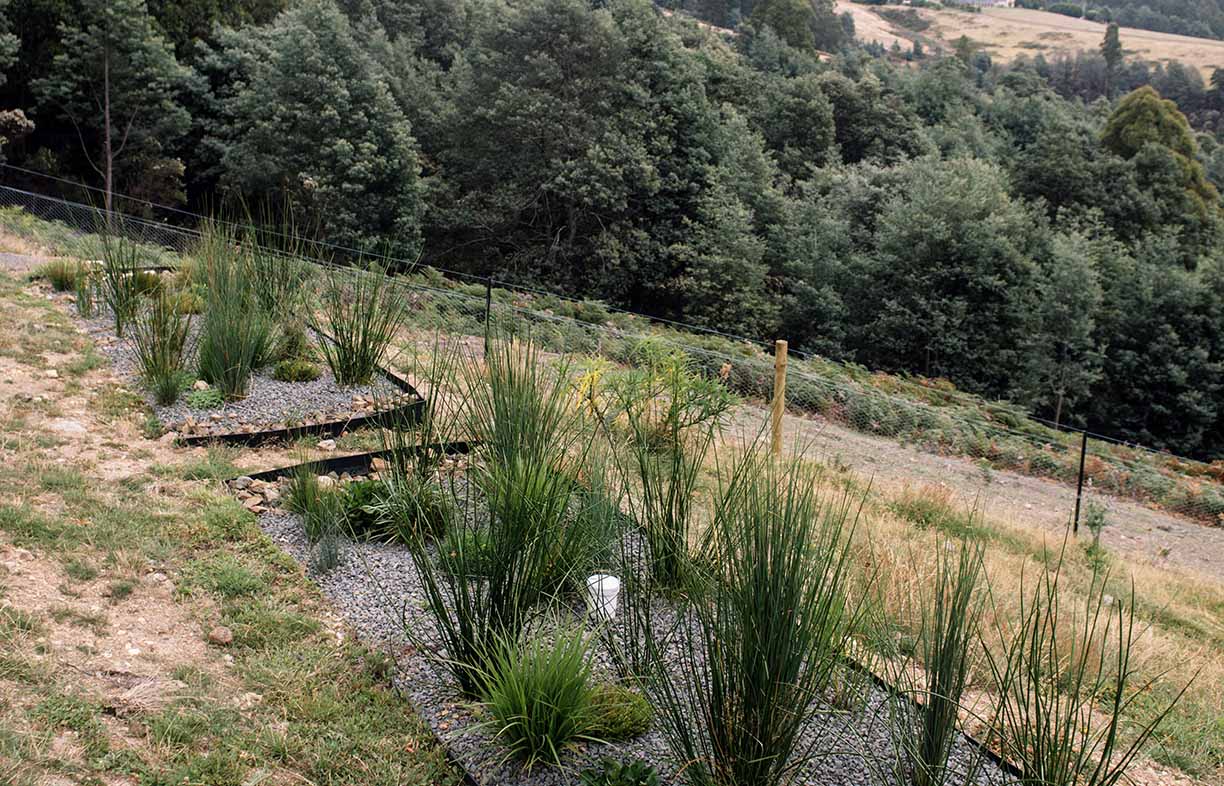
Greywater goes via grease traps to a reed bed, 1.5 m wide by 10 m long, filled 600 mm deep with gravel and planted with reeds mostly dug from nearby damp areas where they grow in profusion. The water that emerges is almost clear with only a faint odour and we expect it to improve further as the reed roots and biofilms continue to grow. The disposal area is subsurface irrigation in our orchard, about 10 x 18 m.
Overall, we could not be happier with the way our house and its systems have turned out. We were confident that Tasmania’s cool climate would be fine to live in if we had a warm house, and in practice the house is much warmer and more comfortable than our Sydney house. I’m writing this at the end of June when the average maximum is about 10 °C and minimum around 6 °C. Yet the indoor temperature during the day and evening is around 20 to 22 °C and might drop to 16 to 18 °C by morning. We only run the fire for a few hours in the evening, often just because it’s so nice rather than because we have to. And it is wonderful having more energy than we know what to do with, at zero ongoing cost.
The thermal design of the house is certainly optimised for winter conditions. As noted, there is potential for it to become a little warm in summer although hot days in Tasmania are pretty rare. Power supply (and to some extent hot water) are weakest in late autumn—at that time of year the days are short and the temperatures are getting low, but the creek is not yet flowing enough to supplement the weakened solar input. Despite those concerns, we have not experienced any serious problems. I mean, if the worst that has happened is a battery state of charge down to 85% and a hot water tank at around 50 °C, what is there to complain about?
Our electric vehicle
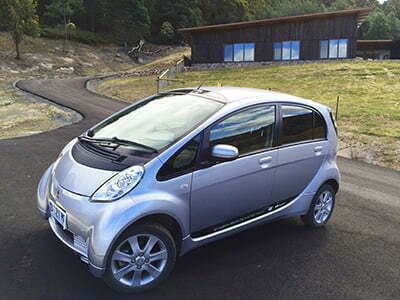
We bought a used Mitsubishi i-MiEV that had done about 45,000km. Claimed range when new was up to 130 km (probably not realistic) but we find we can get 80 km which is enough to drive into Hobart and back. Every day or so we do a shorter trip of about 50 km. It charges from a normal 240 V power point, taking slightly more current than we should from a 10 A outlet, but that means we can top up the charge anywhere we can find a power point, such as in certain multi-storey carparks. Recharging at home can be done any time when the hydro generator is running. In summer, relying solely on PV, we need to be a bit more careful about recharging if the day is not sunny.
Driving is no different to an ordinary car with automatic transmission, except that there is adjustable regenerative braking when you ease off the accelerator pedal. High speeds do result in noticeably reduced range, as does use of the heater or air conditioner which are significant additional loads on the battery. In winter we just rug up with warm clothing when necessary.

This article was first published in Issue 137 (October-December 2016) of Renew magazine.
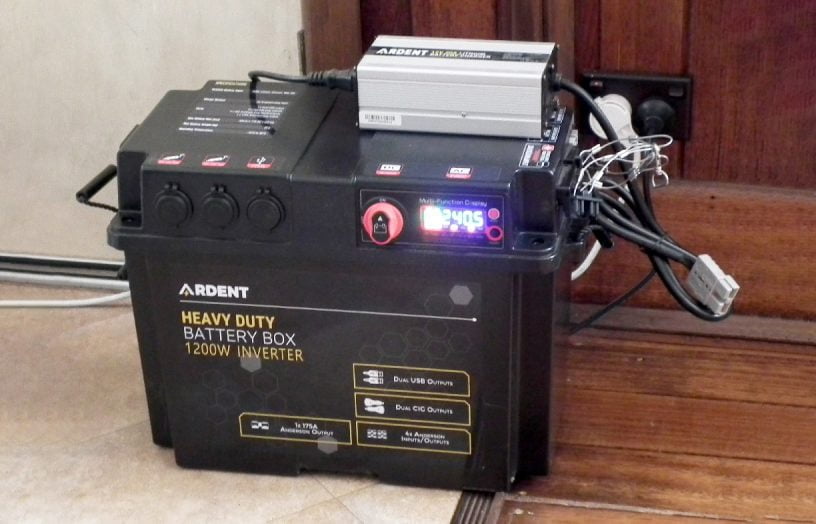 DIY
DIY
Deleting the genset
If you have the need for the occasional use of a generator, then why not replace it with a much cleaner battery backup system instead? Lance Turner explains how.
Read more Renewable grid
Renewable grid
Is a floating solar boom about to begin?
Rob McCann investigates the world of floating solar energy systems.
Read more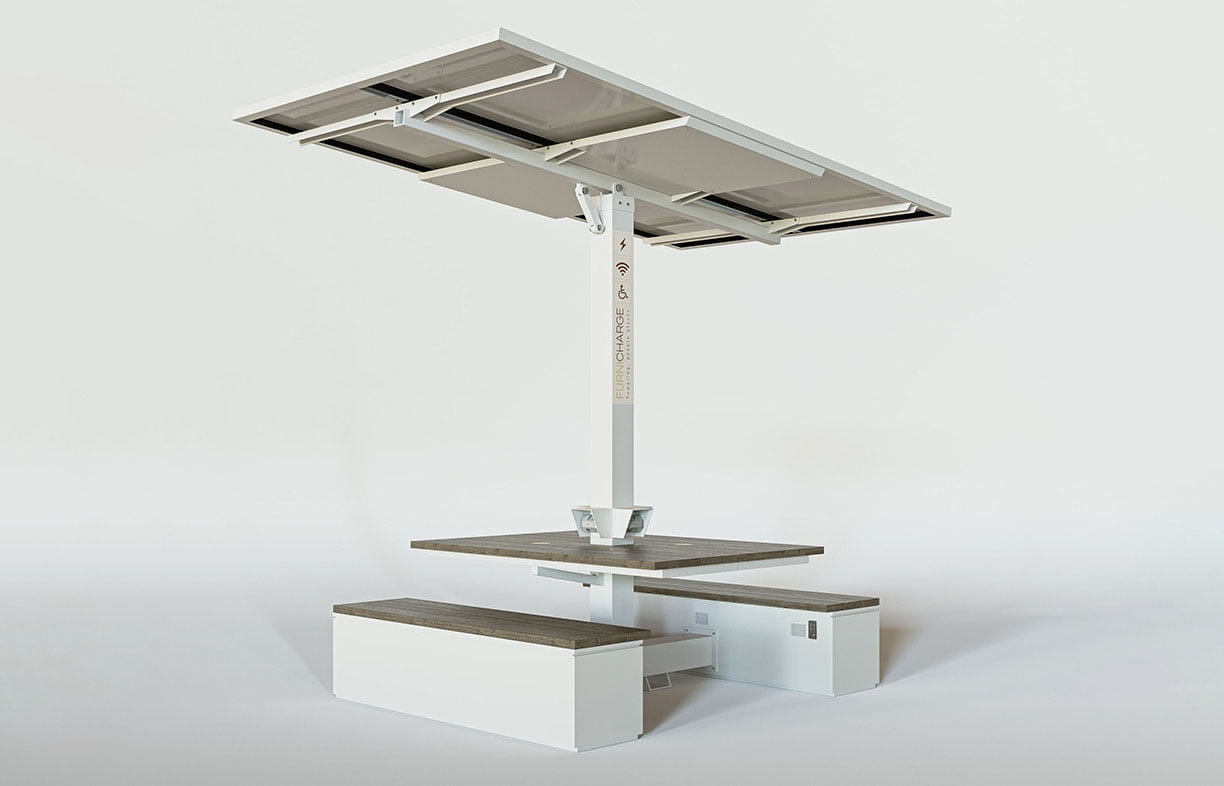 Products
Products
Product profile: Portable solar recharge hubs
Providing device recharging for events or outdoor areas with no access to electricity can be difficult, but the Furnicharge Freedom Hub makes it simple.
Read more
